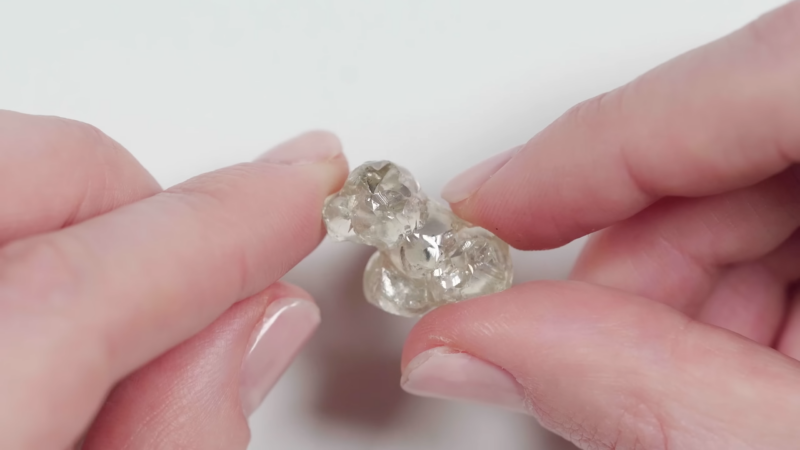How To Test A Raw Diamond At Home

Suspect you've stumbled upon a raw diamond? Don't rush to a jeweler just yet. These simple at-home tests could help determine its authenticity.
This guide provides immediate, actionable methods to assess a potential raw diamond, empowering you to conduct preliminary evaluations before seeking professional appraisal. Accuracy is not guaranteed, so professional evaluation remains crucial for confirmation.
Hardness Test
Diamonds are renowned for their unparalleled hardness. Attempt to scratch a piece of glass with the suspected diamond. A real diamond will scratch glass effortlessly.
If the stone fails to scratch the glass, it is unlikely to be a diamond. This is due to the Mohs hardness scale, where diamonds score a 10.
Scratch Test on the Diamond Itself (Use Caution!)
This test involves observing the diamond's response to a light scratch. Use extreme caution as you risk damaging the stone, regardless of its authenticity.
Attempt to scratch the suspected diamond with another stone or mineral that is known to be hard. A diamond should resist scratching by almost all materials.
Water Drop Test
Observe how water behaves on the surface of the stone. Diamonds have high surface tension.
Carefully place a small drop of water on the suspected diamond. If the water beads up into a dome shape, it suggests a higher surface tension, indicative of a diamond.
If the water spreads out flat, the stone is likely not a diamond.
Heat Test
This test relies on the diamond's ability to rapidly disperse heat. Heat the stone briefly and observe its reaction.
Heat the stone with a lighter for around 30-40 seconds. Immediately drop it into a glass of cold water. A real diamond should withstand the rapid temperature change without shattering.
If the stone shatters, it is unlikely to be a diamond. Some gemstones are prone to cracking or breaking under thermal shock.
Density Test
This test estimates the density of the suspect stone to compare it to that of the average diamond density.
Weigh the suspected diamond using a precise digital scale (grams). Then, measure its volume. You can use the water displacement method to measure the volume. Fill a container with water, noting the initial water level.
Submerge the stone and measure the new water level. The volume equals the difference between the two water levels (in milliliters or cubic centimeters). Divide the weight (in grams) by the volume (in milliliters/cubic centimeters). Diamonds typically have a density between 3.50 and 3.53 g/cm3.
Magnification Inspection
Use a jeweler's loupe or magnifying glass to closely examine the stone. Look for inclusions (internal imperfections) and surface features.
Raw diamonds often have natural inclusions and imperfections. While flawless diamonds exist, most have some minor flaws visible under magnification. Look for small crystals, feathers, or other internal characteristics.
Light Reflection Test
Examine how light reflects off the stone's surface and how it shines light through it.
Diamonds exhibit a high refractive index and strong dispersion. A real diamond will produce bright reflections and disperse light into flashes of color (fire). Observe the brilliance and fire of the stone.
Lower-quality imitations might appear dull or lack the characteristic sparkle.
Important Considerations:
These tests are indicative only and should not be considered definitive. The results are subjective and can be influenced by various factors.
Different types of diamond simulants (e.g., cubic zirconia, moissanite) may mimic some of these characteristics. Therefore, conclusive identification requires professional evaluation.
Always exercise caution when handling unknown stones. Some minerals may contain harmful elements.
Next Steps
If your at-home tests suggest the possibility of a diamond, the next crucial step is to seek a professional appraisal from a certified gemologist.
A gemologist has the expertise and equipment to accurately identify and grade the stone. Professional certification is the only way to confirm its authenticity and value.
Don't attempt further destructive testing. A professional appraisal can save you time and potentially irreversible damage.


















